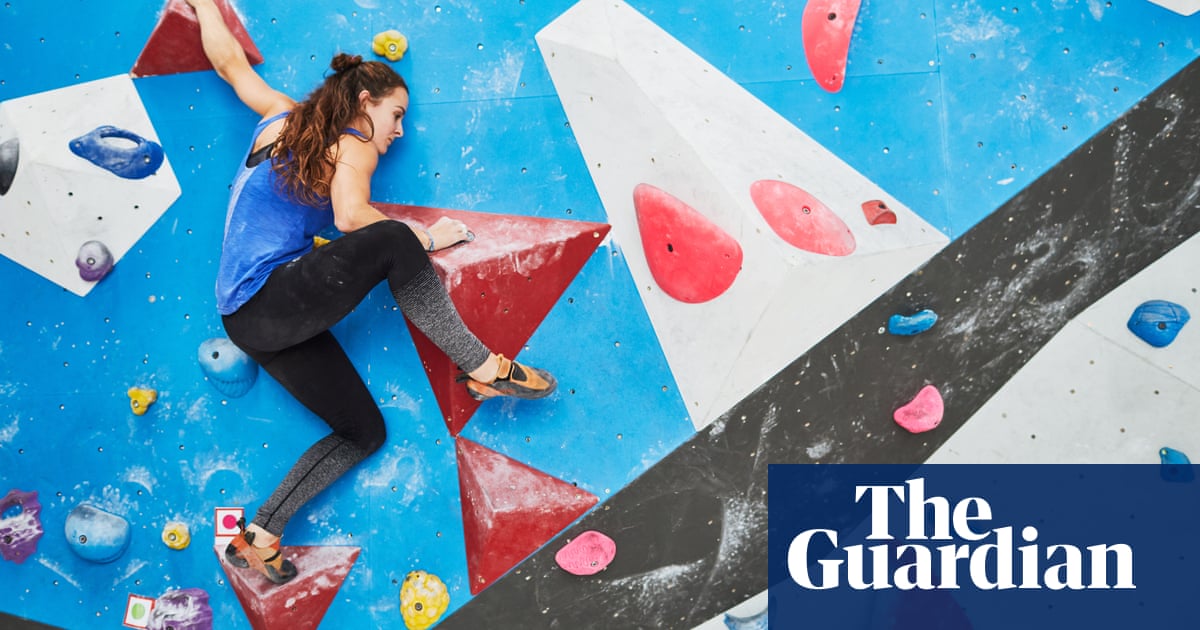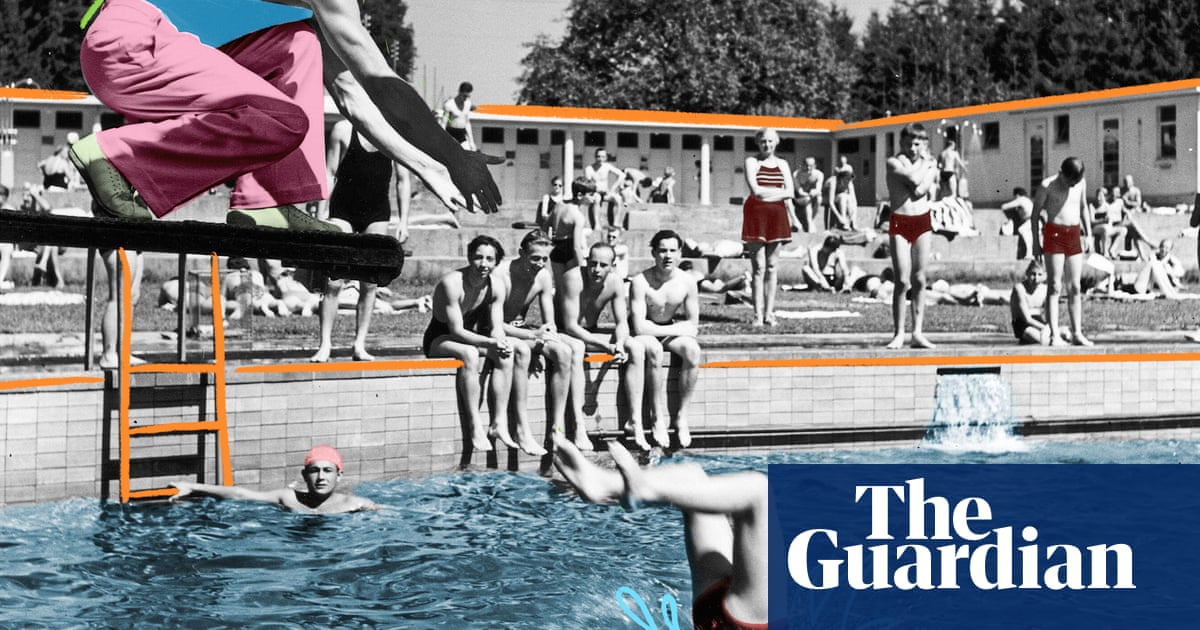Bouldering and climbing have become hugely popular. What was once a niche hobby is now an Olympic sport, and with bouldering gyms popping up across the UK, it’s an exciting time to join the climbing community.
Various weird and wonderful products that promise to up your climbing game are now available, but which ones do you need? As an avid climber who’s tried countless training tools over the past eight years, I have a good idea of what works and what doesn’t – because I’ve spent a lot of money finding out the hard way.
But first I need to tackle the subject of climbing footwear: if there’s one thing you can’t go bouldering without, it’s a decent pair of climbing shoes.
The best climbing shoes to wear bouldering
I’ve owned plenty of climbing shoes over the years, but I sought help from an expert here: Imi Bagnall-Smith is a professional route setter and coach at Catalyst Climbing, a London-based team offering coaching for all levels. Climbing shoes can vary widely, and I’ve not tried on nearly as many as Bagnall-Smith. Crucially, through working with her clients, she has been able to see the types of shoes that work best for new climbers.
Budget climbing shoe:
Simond Klimb unisex
£54.99 at Decathlon
Climbing shoes aren’t cheap. “Nowadays, very few – if any – of the specialist climbing brands offer shoes for less than £100,” says Bagnall-Smith. “For a low-budget first pair of shoes, I’d look to Decathlon’s Simond.”
I’ve owned a pair of Simonds for years, so I have to agree. At only £55, the Simond climbing shoe lacks the premium features of pricier options, such as elasticised tension systems or specialised rubber for heel and toe hooking, but it’s still a good starting point. It’s comfortable and easy to adjust, with soles coated in industry-standard XS Grip rubber to keep your feet secure on the wall.
If you’re a beginner, though, renting shoes is a good starting point. “Most people will do this for a month or two,” says Bagnall-Smith. “However, once you start climbing more regularly, it can be nicer to have your own pair of shoes that fit your foot shape well, and have only been worn by your feet.”
Buying a pair is particularly worth it once you start climbing regularly, because you know you’ll save money in the long run (renting shoes is £4 a go at my gym).
Mid-priced climbing shoe:
La Sportiva Tarantula Boulder
Men’s
£99 at La Sportiva
£99 at Go Outdoors
Women’s
£99 at La Sportiva
£90 at Cotswold Outdoor
“If you can afford it, a beginner model from renowned climbing brands Scarpa or La Sportiva would be a great investment,” says Bagnall-Smith. The La Sportiva Tarantula Boulder, for example, has been designed with beginner boulderers in mind, featuring a neutral shape to fit all foot types.
After something cheaper? Bagnall-Smith recommends the Scarpa Reflex VS (£85): “A flat, beginner-oriented model with two Velcro straps for better fit adjustment. The rubber is sticky but durable, and they will help you transition from rentals to your own shoes.
“I’d recommend trying them on and choosing whichever fits best. While climbing shoes aren’t always comfortable, a better fit makes a huge difference.”
Premium climbing shoe:
Scarpa Veloce
Men’s
£140 at Go Outdoors
Women’s
£140 at Go Outdoors
Looking for the ultimate beginner climbing shoe? These are the ones, according to Bagnall-Smith. “Whenever I’m recommending climbing shoes to a newer indoor climber, there’s one pair I pick every time: the Scarpa Veloce,” she says. “At £140, they’re slightly more expensive than other beginner shoes, but the quality is high. They make standing on indoor holds and structures feel more secure.”
Bagnall-Smith describes them as “almost like a sticky, squishy, rubber sock, with the grippiest rubber of any beginner model I’ve tried.” And because of the soft S72 rubber, they’re more comfortable than other shoes at this price. “They don’t cause the same pressure points or dig in very much, so I find it much easier to wear them for a whole session,” she says. These shoes are also vegan-friendly, ideal for those wanting to avoid animal-based materials and glues.
Essential bouldering equipment
Climbing chalk:
Moon Dust loose chalk
£8 for 300g at Tiso
Most climbers will “chalk up” before every boulder. The main purpose is to increase the friction between your skin and the climbing holds through sweat absorption, though you could argue the psychological boost is equally important. Before trying a boulder that’s at my physical limit, I want to do everything I can to improve my chances. The careful application of chalk builds my confidence and makes me push that much harder on an attempt. Call it a placebo, but it works for me – and for everyone else I climb with.
Moon Dust is a mid-priced chalk, but it more than holds its own against pricier versions. I’ve tried many chalk brands over the years, and find the grittier texture of Moon Dust helps it to stay on my hands that bit longer. Compared with finer-powder chalks, it’s less prone to exploding all over the gym like a smoke grenade when you accidentally kick over your chalk bag.
Chalk bag:
Organic Climbing lunch bag
£38.50 at Ellis Brigham
While nothing is stopping you from dipping your hands straight into the chalk packet as you make your way around the gym, a chalk bag – or boulder bucket – is a much more elegant solution. The lunch bag from Organic Climbing is a popular choice due to its modest price, sturdy construction and fetching patterns, the latter being unique to each bag. It has everything you need from a bouldering bucket, with a Velcro seal, two elastic brush holders and a zippered back pocket to store your phone and keys. Oh, and it holds loads of chalk, which is fairly important.
Hold brush:
Metolius M-16 brush
£4.94 at SportsShoes
Over time, chalk and burned shoe rubber build up on the holds of the gym wall, reducing that all-important friction between you and the plastic. Giving them a quick clean with a good brush can make all the difference when tackling a tricky boulder, especially if it’s a popular (and therefore dirtier) climb.
The M-16 was originally designed as a maintenance tool for assault rifles, but it also turns out to be effective at cleaning climbing holds – a much better use for a brush. The brush’s large end is better for dusting off small to medium climbing holds, while the smaller brush works well for scrubbing tiny crimps and foot edges.
Finger tape:
Beta tape 2.5cm x 10m
£6 at Tiso
Finger tape is primarily used for support after an injury, but it has many other uses when climbing. It’s common practice to wrap tape over any cuts and blisters, for example, because a plaster won’t stay in place when pulling on holds. Crack climbers use this kind of tape to cover their entire hands, almost like a glove, although this specialist type of climbing is rarely replicated in gyms.
Bouldering pad:
Organic Climbing Simple pad
£230 at Blacks
£250 at Go Outdoors
Ready for real rock in the great outdoors? Then you’ll need something to land on that’s not the ground. There’s no golden rule for buying a crash pad; they vary, and every climber has their preference. Some bouldering pads are wider than others, some have denser foam – some even have little carpets for wiping muck off your shoes. Ultimately, any will be better than no pad at all. If you don’t know where to start and want something reliable, you can’t go wrong with the Organic Climbing Simple pad. It looks pretty, folds in half to transport, and it’s built to last.
Climbing shoes are inherently disgusting. When you take them off after a long session on the wall, you leave behind a potent brew of sweat and skin that will fester for days unless you take immediate corrective action. The first step is to limit bacterial growth by drying out the shoes with a moisture absorber. SmellWell’s freshener inserts are just the right size to pop inside your climbing shoes. By the time you get home, they should have soaked up the worst of the damage, drying out your shoes and suffusing them with a pleasing natural scent.
Shoe fresheners:
Boot Bananas
£15 at Go Outdoors
£16.50 at Amazon
Once your shoes are almost dry, it’s time to pop in a pair of Boot Bananas. These brightly coloured shoe fresheners carry an invigorating lavender fragrance that overpowers all but the most heinous of foot odours. They also have antimicrobial properties that can keep bacteria at bay, prolonging your shoes’ lifespan.
The outer fabric and inner charcoal act as additional moisture absorbers, but the effect is limited, so don’t rely on this alone. Dry out the shoes first, either with the moisture absorbers above or a hairdryer. You’ll know when your Boot Bananas need to be replaced because they slowly turn brown – or “ripen” – over time. It’s an intentional feature – nothing to be worried about.
Shoe cleaner:
Shoe Chalk
Cleaning climbing shoes is a controversial topic. Naturally, you don’t want to wreck their structural integrity by leaving them to soak in a bucket or – even worse – throwing them in the wash. Shoe chalk has been designed specifically to clean out the inside of climbing shoes, flushing out the grime while leaving the outer materials untouched.
Climbing training aids
Resistance bands:
Lattice Training resistance bands
£12.50 for five at Lattice Training
Bands are versatile training tools, allowing you to perform effective non-impact warmups to prevent injuries while improving your strength and mobility. Bands can also be used to bridge the gap if you can’t yet perform pull-ups; looped around the bar and your feet, the band offsets your body weight so that you can gradually build enough strength to perform the exercise unassisted.
Yoga mat:
Lattice Training flex mat
As you ascend the grades, flexibility becomes increasingly important. Lattice Training’s flex yoga mat is designed for climbers. Its laser-etched scales and angle markers let you measure your body’s exact limitations in various poses, so you can easily track progress. The non-slip cork surface and rubber base are major plus points.
Finger strength training:
Beastmaker 1000 Series
£95 at Beastmaker
£87 at Amazon
Sooner or later you’ll hit a plateau that sees you “stuck” at a certain grade for longer than you’d like. This may be the moment to start climbing-specific finger training, AKA hangboarding. Do you need to hangboard? No. But it’s the best-known way to consistently and progressively train your finger strength on small edges while avoiding injury.
The Beastmaker 1000 Series is one of the more accessible hangboards because of the two large handles on the top row. Set at shoulder width, they’re ideal for practising pull-ups, lock-offs and one-arm hangs before getting to grips with the smaller edges on the board. Beastmaker has an accompanying book and app, so you can follow along with the programme to incrementally increase the difficulty of your routine.
Extensor bands:
The Hand Band
£12.99 at Amazon
Although climbing relies heavily on the forearm’s flexor muscles, the extensor muscles play an important part in your overall grip strength. The stronger your extensors are, the better supported your fingers are while climbing. That’s where a set of extensor bands comes in. The beauty of these is that you can use them anywhere; stick some in your pocket and take them out whenever you’re bored.
Don’t bother with …
High-resistance grip trainers
The closed-hand strength that these grippers help to build isn’t that transferable to climbing, where open-hand grip strength is king. A handheld grip trainer routine won’t improve your climbing, with the possible exception of pulling on pinch holds. This is a lesson I learned the hard way. That said, some climbers find low-resistance grippers useful for warming up their fingers.
Extremely undersized climbing shoes
Some climbers believe that, for optimum performance, you need shoes so small that they’re actually painful to wear. It’s bad advice. “Climbing shoes are designed to be worn with a fairly tight fit that hugs the feet closely, so you may have to downsize from your street shoe size (usually 1-2 EU sizes),” says Bagnall-Smith. But that doesn’t mean downsizing to the point where you’re in pain and feeling the need to take them off after every single boulder. You just want to make sure that your feet aren’t sliding around, and that the shoes hold firm when performing high-tension manoeuvres, such as smearing and heel-hooking.
Bagnall-Smith also recommends going in person to try on as many shoes as possible. “Usually the staff can give helpful guidance on sizing, and foot shape can play a huge role in how shoes fit,” she says. “Sometimes you might need to try on a few before you find one that fits just right.”
On a personal note, I once watched a man spend two minutes putting on a single shoe at the gym. The grunts of pain and bulging neck veins were something to behold. Frankly, if the act of pulling on your shoes is more strenuous than the boulders you climb once they’re on, you may need bigger shoes.
Ankle weights, wrist weights and weighted vests
Adding weight to your body will obviously make it more difficult to pull yourself up the wall. In theory, this will result in greater strength gains and better climbing. In reality, however, adding weights may actively prevent you from improving your technique on the wall while also increasing the risk of injury, especially if you’re really piling on the kilos.
Instead of adding weight to make climbing harder, you should focus on efficient body movement to make climbing easier. The exception is in off-the-wall training, where adding weights to a vest or harness when doing pull-ups or max-limit hangs can be advantageous.










